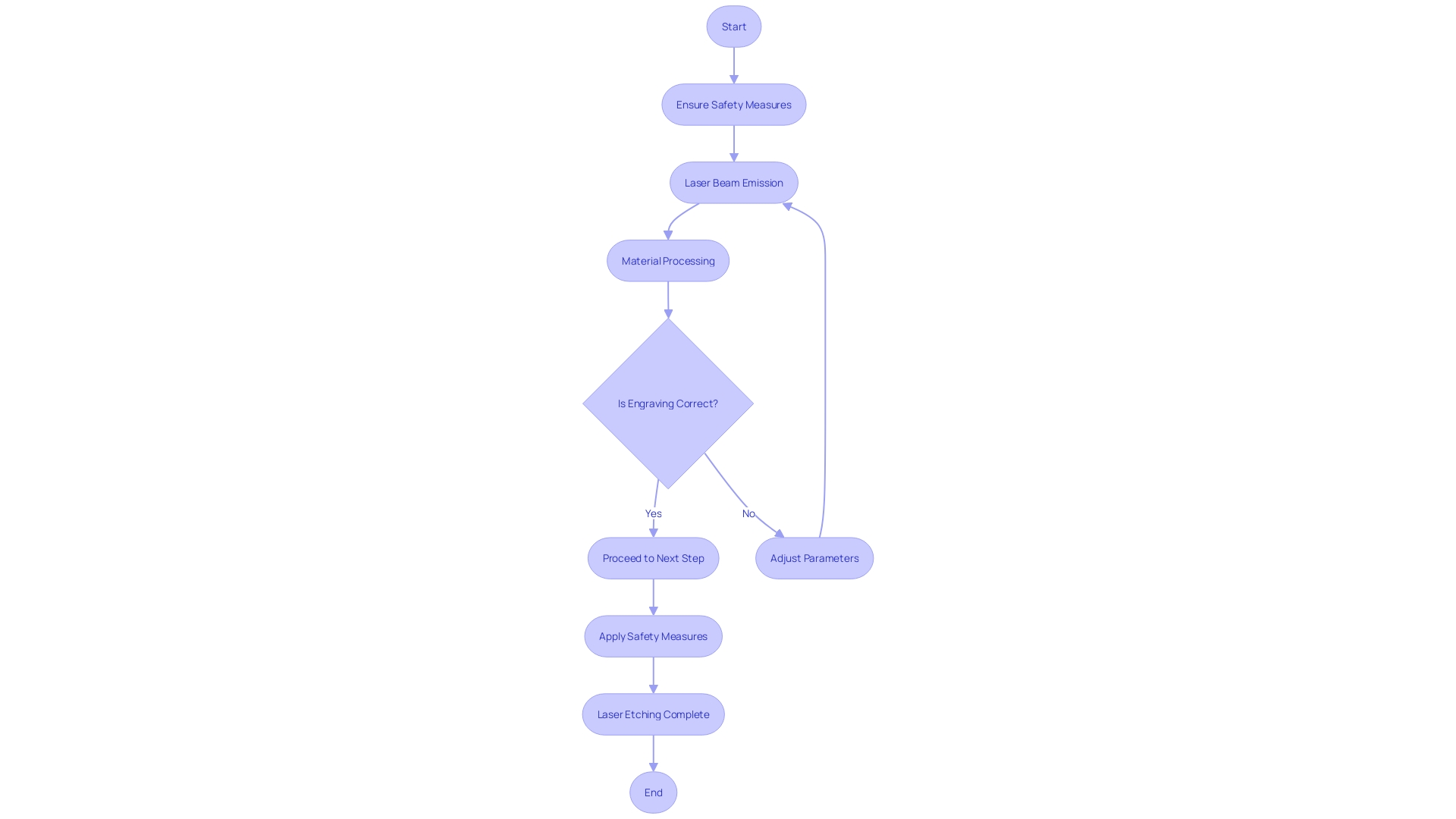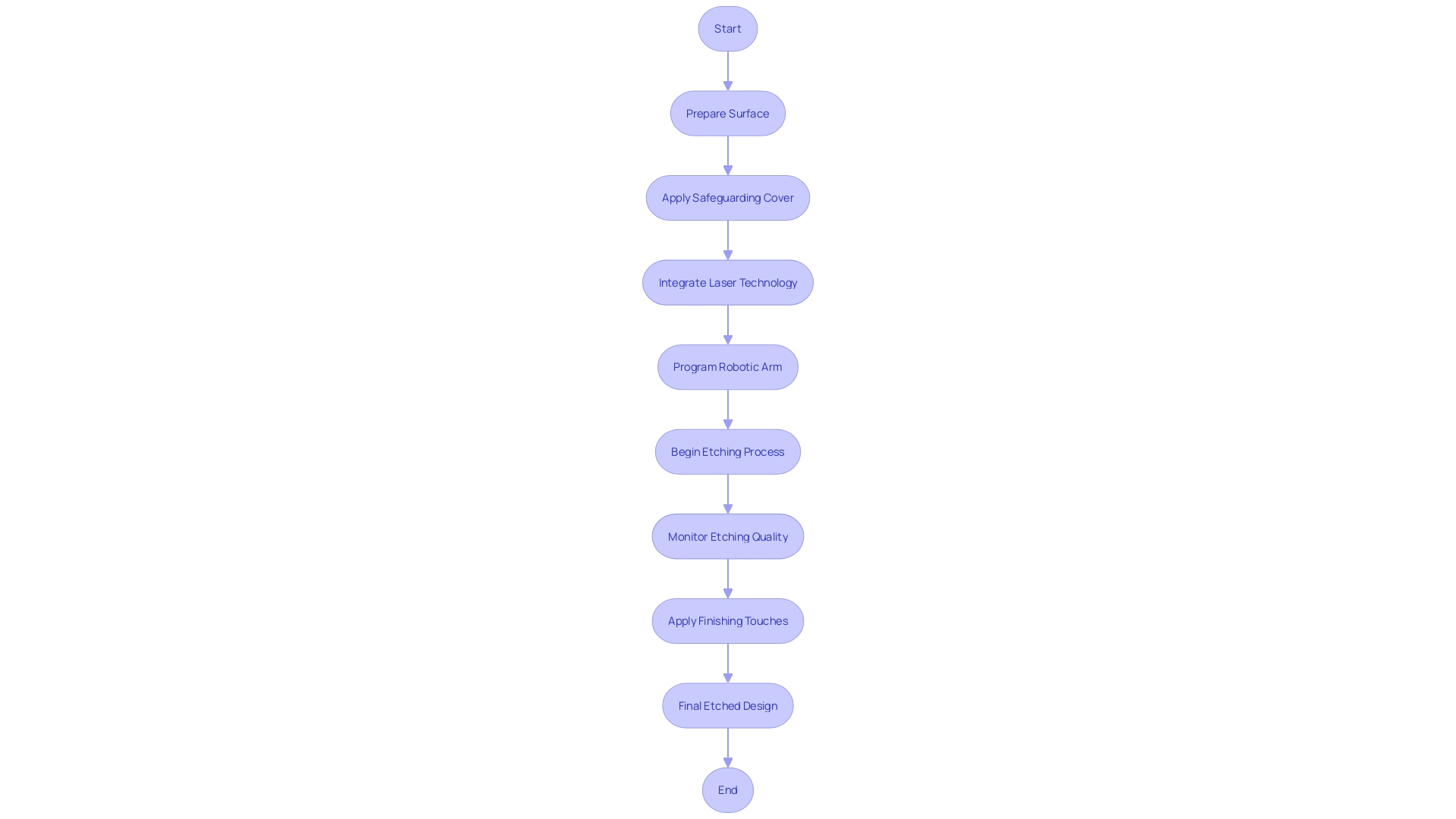Introduction
Stepping into the world of laser engraving opens up a realm of possibilities for creating intricate designs and permanent markings on various materials. Laser engraving machines, equipped with laser sources, control systems, and focusing lenses, utilize concentrated beams of light to vaporize or melt the surface of metals, leaving a lasting impression. This precise and adaptable technology has found its place in the manufacturing sector, aided by the integration of robotic arms and advanced software.
Safety measures and software play crucial roles in ensuring the success of the engraving process. Factors such as metal composition and laser settings influence the quality of the engraving, with each parameter needing to be carefully adjusted for optimal results. The choice of laser type is also essential, with fiber lasers being the preferred option for metal engraving.
Surface preparation, including cleaning and applying protective coatings, sets the stage for flawless engraving. As we push the boundaries of what's possible with laser engraving, the current standards will pave the way for revolutionary techniques in the future.
Understanding Laser Engraving Machines and Technology
Exploring the domain of laser etching uncovers a realm of possibilities for crafting intricate designs and permanent markings on substances like aluminum, steel, and other materials. At the core of this process lies the etching machine, a complex system that includes a beam source, control system, and a focusing lens. When the concentrated beam emits its focused light, the intense heat either vaporizes or melts the metal's surface, leaving a lasting impression.
With the advancement of technology, engraving has carved a niche for itself in the manufacturing sector, celebrated for its precision and adaptability. This has been further improved by the integration of four-axis all-metal robotic arms that guide the light beam with extraordinary accuracy, driven by stepper motors and sophisticated path planning software. These tools enable the creation of everything from simple patterns to elaborate designs with exquisite detail.
The CO₂ engraver is a frequent occurrence in the industry, appreciated for its simplicity of control through an IO interface and compatibility with systems like the UltraArm. It utilizes a set of components, including a cooling system and PWM (Pulse Width Modulation), to control the generation, amplification, focusing, and the intricate dance of material processing.
Safety, of course, remains paramount. Adequate measures, such as protective eyewear and ensuring a well-ventilated workspace, are indispensable to safeguard against potential hazards. The design phase is equally crucial, often employing an array of software ranging from parametric tools to interactive drawing programs to shape the initial vision into a laser-ready format.
As we anticipate the future, what was previously a benchmark in laser etching has now become the foundation, with forthcoming standards poised to broaden the realm of possibilities even more. This echoes the sentiments from the latest research presented by MIT researchers, who are pushing the boundaries by developing a machine that can print large-scale parts in a metallic material swiftly and cool them rapidly, promising high throughput with excellent control.

Factors Influencing Engraving Quality
Laser etching on metallic surfaces is both a creative pursuit and a scientific discipline, necessitating an extensive comprehension of material characteristics and meticulous regulation of the etching procedure. The secret to success lies in the careful adjustment of light beam settings, which varies depending on the metal in question. For example, alloy steel and stainless steel, although they are both long-lasting and commonly utilized, have unique compositions that require varying power and wavelength adjustments to attain the desired quality of marking. The speed of the etching also plays a crucial role, as it impacts the depth and clarity of the ultimate etching.
Furthermore, it's not just about the laser's power; factors such as the focal length and beam quality significantly influence the engraving outcome. Each parameter must be adjusted to work with the unique characteristics of the material, such as the composition and classification differences between alloy steel and stainless steel. Understanding these subtleties is crucial, as shown by recent advancements presented at the Association for Computer Aided Design in Architecture Conference, where researchers emphasized the significance of controlling the material's temperature to avoid structural issues such as cracking and warping.
In the fast-paced world of manufacturing, where standards evolve rapidly, staying ahead means leveraging these insights for superior marking outcomes. As we push the boundaries of what's possible with material processing, the continuous monitoring and analysis of production data become indispensable. This ensures that every engraved piece meets the stringent quality demands of diverse industries, from the safety-centric automotive sector to the precision-reliant electronics industry.
To echo the sentiments of industry experts, what was once a benchmark is now merely a baseline, and the current standards will pave the way for even more revolutionary techniques in the future. With over eight decades of experience, companies like Sandvik Coromant echo this philosophy, viewing each challenge as a stepping stone towards innovation and growth within the industry.
Choosing the Right Laser for Metal Engraving
Understanding the different types of engraving technology requires a keen knowledge of the various beam devices and their capabilities. When it comes to engraving metals, choosing the appropriate beam is crucial to guarantee precise intricacy and durability. Despite the wide range of applications offered by CO2 lasers, their performance on metals is significantly less precise compared to the exactness achievable with fiber lasers. Fiber beams are the preferred choice for marking on metals, praised for their accuracy and durability. For less intensive tasks, diode beams present a viable option, adept at handling lighter metal engraving endeavors. To make an informed decision, one must compare the project's specific demands against the characteristics of each beam type. With the industry continuously evolving, what was once the benchmark is now merely the starting point; today's innovations lay the groundwork for future advancements. Manufacturers, such as the TRUMPF Group, lead the charge, offering an array of sophisticated light-emitting tools that cater to an ever-expanding market. When selecting a cutting tool, consider not only the finesse and durability it offers, but also the technological support and reputation of the brand behind it, ensuring a worthwhile investment for your projects.
Preparing the Metal Surface for Engraving
The fascination of accurate laser etching starts well before the laser beam moves gracefully over the surface. The key to a flawless finish lies in meticulous surface preparation. Whether addressing the durability of steel, the lightweight nature of aluminum, or the versatility of other materials, every project requires a pristine canvas. Cleaning the surface with solvents or specialized agents removes any trace of oil or contaminants, preparing the way for the masterpiece to take shape. To protect the metal from the intense heat of the etching procedure, a safeguarding covering or covering layer is skillfully applied, guaranteeing the accuracy of the laser's contact and the long-lasting preservation of the etchings. As we stand on the threshold of innovative leaps, with laser technology now seamlessly integrating with the precision of a four-axis all-metal robotic arm, the engraving process becomes a symphony of accuracy. This harmonious combination of preparation and cutting-edge technology promises unmatched durability and intricacy in every etched design, reflecting an era where what was once the pinnacle of innovation is now the foundational standard for tomorrow's marvels.

Conclusion
In conclusion, laser engraving machines offer endless possibilities for creating intricate designs and permanent markings on various materials. The integration of robotic arms and advanced software enhances precision and adaptability in the manufacturing sector. Safety measures and software are crucial for successful engraving, while factors like metal composition and laser settings influence quality.
Fiber lasers are preferred for their precision and robustness in metal engraving.
Surface preparation, including cleaning and applying protective coatings, is vital for flawless results. As we push the boundaries of laser engraving, current standards pave the way for revolutionary techniques.
Understanding factors that influence engraving quality is paramount. Meticulous adjustment of laser settings, considering metal composition and engraving speed, is necessary for optimal results. Continuous monitoring and analysis of production data meet quality demands in various industries.
Choosing the right laser is key, with fiber lasers providing detail and longevity. Manufacturers like the TRUMPF Group offer sophisticated tools for the expanding market.
Preparing the metal surface is essential, ensuring a pristine canvas and applying protective coatings. Laser engraving, combined with software and robotic arms, promises durability and intricacy in every design.
As we push boundaries, we create marvels reflecting precision and innovation. Current standards are the starting point for future advancements. By staying ahead and leveraging insights, we unlock laser engraving's full potential, creating extraordinary works of art.
Discover the limitless possibilities of laser engraving and explore our innovative techniques today!




